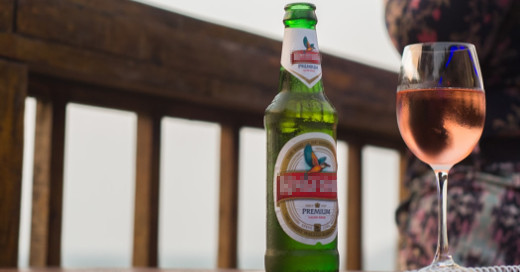Recent study investigates the impact of the combination and order of beer and wine on hangover severity
“Beer before wine and you’ll feel fine, wine before beer and you’ll feel queer” or in German “Bier auf Wein, das lass sein; Wein auf Bier, das rat’ ich dir” – this seems to be a common folk wisdom and regularly used recommendation with regards to alcohol beverage consumption in many countries and languages.
But is this just a saying or do we have scientific proof for this concept? Scientists from the University of Witten/Herdecke and the University of Cambridge investigated this old folklore and published the results in the American Journal of Clinical Nutrition early this year [1].

Design
In this single centre, open-label, parallel, crossover trial subjects were matched into triplets according to age, gender, body composition, alcohol drinking habits, and hangover frequency and were afterwards randomly allocated into either one of two intervention groups or a control intervention (1:1:1). Intervention 1 consisted of consuming beer up to a breath alcohol concentration (BrAC) ≥0.05% and then wine to BrAC ≥0.11% (vice versa for intervention 2). Control group subjects consumed either only beer or only wine. On a second intervention day (crossover) ≥1 week later, treatment-group subjects were switched to the opposite drinking order. Control-group subjects who drank only beer on the first intervention received only wine on the second study day (and vice versa) – both beverages were consumed until a BrAC of ≥0.11% was reached.
The beer used in the study was a premium Pilsner lager provided by Carlsberg (alcohol content of 5%), which was free of charge. Carslberg had no influence on the study design. In addition, a 2015 Edelgräfler quality white wine with an alcohol concentration of 11.1% was used.
 [Designed by yanalya / Freepik]
[Designed by yanalya / Freepik]
Primary endpoint was hangover severity assessed by an Acute Hangover Scale the day after the intervention. Eight items were rated (including thirst, fatigue, headache, dizziness, nausea, stomach ache, tachycardia and loss of appetite) between an intensity of 0-7 on the day after intervention, once BrAC had turned to zero.
Secondary endpoints were factors associated with hangover intensity (e.g. demographics, laboratory parameters).
On the intervention day subjects received a standardized meal, which was calculated according to the age- and gender-specific estimated energy requirements. At regular time points subjects were asked about their well-being and were asked to judge their perceived level of drunkenness at the end of each intervention. After completion of the intervention, all participants received an individualized amount of water (6mL/kg body weight) which had to be consumed before going to sleep at the study site. The duration of sleep and the room temperature were standardised for all participants.
Results
Ninety subjects were included in the trial (treatment group 1 n=31, treatment group 2 n=31, control group n=28). Participants were aged 19-40 years (mean age 23.9 years), with a similar gender distribution between the three groups. The mean alcohol consumption rate was “several times per month” and the hangover frequency was reported to be between “rarely occurring” and “a few times per month”. On average, subjects in the intervention group had to consume about 1.4 L of beer to reach a BrAC of ≥0.05% and 0.7 L of wine to reach a BrAC of ≥0.11%. The amounts of alcohol were similar with the opposite regimen (first wine and afterwards beer) but the switch from wine to beer occurred earlier.
Neither type nor order of consumed alcoholic beverages significantly affected hangover intensity (p > 0.05).
None of the 3 groups had a significantly different Acute Hangover Scale rating with the different orders of the beverages. Of interest, women reported to have a greater hangover severity for both intervention days than men (p = 0.009). To determine the factors which have the greatest impact on hangover severity, a multivariate linear regression model revealed that the occurrence of “vomiting” and “perceived drunkenness” can be regarded as useful predictors of alcohol-induced hangover.
The performed blood and urine tests before and after the intervention did not show a significant difference between the 3 groups (p > 0.05).
Conclusion
The trial could show that neither the order nor the type of alcoholic beverage had an influence on hangover severity. Up to now, the exact etiology of alcohol-induced hangover is not fully elucidated. However, there are numerous suggested causes like dehydration, proinflammatory cytokine perturbation as well as metabolic alterations [2, 3]. Furthermore, hangover pathologies could be linked to ingredients other than the pure alcohol itself in the beverage – for example substances that colour and flavour drinks. Also, individual tolerances (e.g., genotype variation) and habituation to alcohol intake are very likely to play a role in hangover predisposition.
What the old folklore meant in the Middle Ages: in the past, this saying was not about preventing hangovers – instead, it was a general statement regarding social advancement: People who drank beer usually belonged to poorer social classes, whereas wealthy people drank wine. With the “recommendation” to drink wine after beer, it meant nothing more than to achieve a socio-economic rise, rather than the opposite, drinking beer after wine and lose your status in society.




